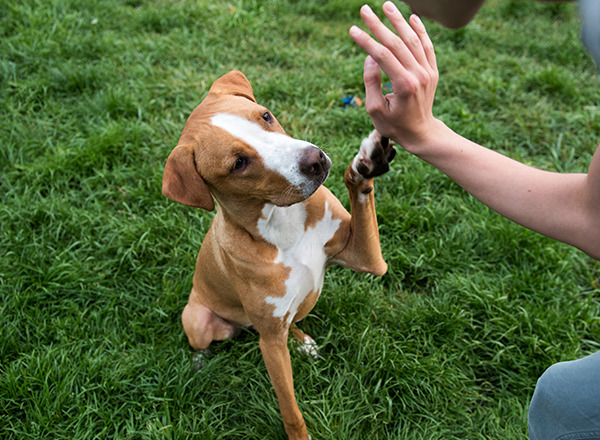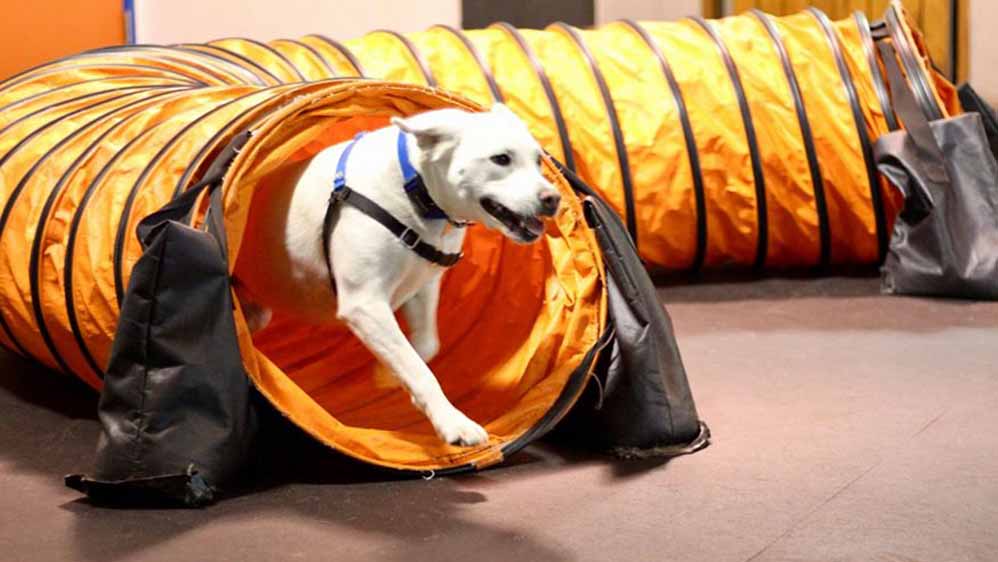Typical Behavioral Issues and Their Solutions in Dog Training
Typical Behavioral Issues and Their Solutions in Dog Training
Blog Article
Important Tips for Successful Dog Training: An Overview for Pet Dog Owners
Effective canine training is a complex procedure that needs a critical approach customized to both the pet dog's personality and the owner's purposes. Key elements such as developing regular commands, using favorable reinforcement, and promoting very early socialization play crucial duties in promoting a well-adjusted canine buddy. Nonetheless, several pet dog proprietors encounter challenges that can hinder progression, leading to frustration and unpredictability. Comprehending how to browse these obstacles can substantially enhance the training experience, inevitably transforming the partnership in between proprietor and dog. What are the important approaches that can be utilized to make sure success in this undertaking?
Recognizing Dog Behavior
Recognizing pet behavior is essential for reliable training and cultivating an unified connection in between pooches and their owners. dog training. Pet dogs communicate mainly with body language, articulations, and actions, making it crucial for owners to translate these signals precisely.

Socializing plays a considerable function in dog habits; direct exposure to various settings, individuals, and other animals can substantially affect a canine's character. Aspects such as type features and individual character need to direct training techniques, as some types may have specific behavior characteristics that require tailored techniques. By recognizing these elements, owners can create a helpful environment that encourages positive actions, causing successful training end results and a deeper bond with their pets.
Establishing Constant Commands
Effective communication with your dog starts with developing constant commands. This fundamental component of training is critical for promoting understanding between you and your family pet. Uniformity in the commands you utilize ensures that your dog can accurately associate particular words or expressions with the desired behaviors.
When picking commands, choose clear, distinct words that are very easy to separate and claim from each other. Avoid using similar-sounding commands that might confuse your pet dog. For instance, using "sit" and "remain" is ideal, but "rest" and "hit" might cause misconceptions.
Additionally, maintain the very same tone and quantity for every command. Canines are sensitive to vocal cues, so differing your tone can produce confusion.
It is just as essential to make sure that all relative are on the same page concerning the commands used. A united front in command usage will certainly protect against mixed signals and strengthen the discovering process.
Positive Support Strategies
The power of positive support in pet training depends on its ability to encourage wanted habits through incentives and praise. This strategy is grounded in the concept that actions complied with by favorable end results are extra likely to be repeated. By including positive reinforcement right into your training regimen, you can properly form your pet's habits in a useful manner.
To carry out positive support, it's important to recognize what encourages your canine, whether it be deals with, playthings, or spoken appreciation. When your canine carries out a preferred action, such as resting on command, promptly compensate them with a treat or love. This association between the command and the favorable end result enhances their understanding.
It's vital to timing the rewards properly; supplying the reinforcement within secs of the preferred actions assists your canine make the connection (dog training). Additionally, uniformity is crucial-- guarantee that all relative utilize the same commands and benefit systems to prevent complication

Slowly, you can minimize the frequency of treats as your dog finds out the habits, transitioning to applaud or periodic rewards. This method not just fosters a strong bond between you and your dog but additionally advertises a positive knowing setting, making educating a satisfying experience for both.
Socialization and Interaction
Consistently revealing your dog to a selection of environments, people, and other animals is important for their social growth. Socializing needs to begin early, preferably during the important home window of 3 to 14 weeks, when pups are most receptive to new experiences. Older pets can also benefit from continuous socialization initiatives.
Present your dog to different settings, such as parks, pet-friendly shops, and metropolitan locations. This direct exposure aids them adapt to different stimulations, minimizing stress and anxiety and worry responses. Encourage favorable interactions with various other pets and people, guaranteeing that these encounters are controlled and risk-free to foster confidence.
Use organized playdates with courteous canines, as this can boost your dog's social abilities and instruct them ideal behavior. Obedience courses and training sessions also provide excellent chances for socializing, allowing your pet dog to connect with others in a monitored atmosphere.
Screen your pet's body movement during interactions, as this will help you assess their convenience degree. Slowly increase direct exposure to even more challenging scenarios while ensuring that each experience declares. A well-socialized pet dog is much more likely read review to show balanced actions, making them a pleasure to have in any setting.
Addressing Typical Training Obstacles
Every dog owner will certainly come across training difficulties at some time, no matter their canine's age or socializing level. Recognizing usual problems such as stubbornness, diversions, and terror can assist in establishing effective methods for renovation.

Gradually introduce distractions as the pet dog becomes much more skillful in commands. Short, frequent training sessions are also reliable in keeping focus.
Terror can hinder a dog's understanding procedure. Gradual desensitization to the resource of anxiety, matched with positive reinforcement, can aid ease anxiousness. Persistence is essential; never ever require a canine into a scenario that creates distress, as this may aggravate the problem.
Ultimately, understanding and dealing with these common difficulties with a structured approach will cultivate an extra productive training experience, reinforcing the bond in between canine and proprietor while advertising efficient knowing.
Final Thought
In recap, successful dog training counts on a thorough understanding of canine habits, the facility of regular commands, and the application of favorable reinforcement methods. Socialization plays a critical role this in developing well-adjusted animals, while dealing with common training difficulties calls for patience and adaptability. By executing these essential methods, pet proprietors can foster a solid bond with their pet dogs and advertise preferable behaviors, eventually causing a harmonious partnership in between humans and their canine buddies.
Comprehending dog behavior is necessary for effective training and cultivating a harmonious relationship in between pooches and their proprietors.Socialization plays a considerable role in pet behavior; direct exposure to different settings, individuals, and various other animals can dramatically impact a dog's temperament.The power of positive reinforcement Read Full Article in pet training lies in its ability to urge desired habits via rewards and appreciation. By incorporating favorable support into your training regimen, you can efficiently shape your pet's habits in a useful way.
In summary, effective pet training depends on a comprehensive understanding of canine actions, the facility of consistent commands, and the application of favorable reinforcement methods.
Report this page